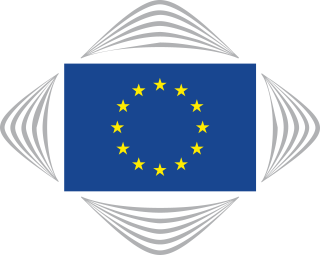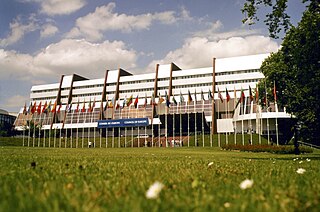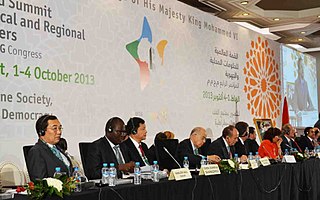Multi-level governance and the European Union
The study of the European Union has been characterized by two different theoretical phases. The first phase was dominated by studies from the field of international relations; in the second phase these studies were revised and insights from among others, public policy were added. The most straightforward way of understanding this theoretical shift is to see it as a move away from treating the EU as an international organisation similar to others (e.g. NATO) to seeing it as something unique among international organisations. The uniqueness of the EU relates both to the nature and to the extent of its development. This means that in some areas of activity the EU displays more properties related to national political systems than to those of international organisations.
The theory of multi-level governance belongs to the second phase. Multi-level governance characterizes the changing relationships between actors situated at different territorial levels, both from the public and the private sectors. The multi-level governance theory crosses the traditionally separate domains of domestic and international politics and highlights the increasingly fading distinction between these domains in the context of European integration. Multi-level governance was first developed from a study of EU policy and then applied to EU decision-making more generally. An early explanation referred to multi-level governance as a system of continuous negotiation among nested governments at several territorial tiers [5] and described how supranational, national, regional, and local governments are enmeshed in territorially overarching policy networks. [6] The theory emphasized both the increasingly frequent and complex interactions between governmental actors and the increasingly important dimension of non-state actors that are mobilized in cohesion policy-making and in the EU policy more generally. As such, multi-level governance raised new and important questions about the role, power and authority of states.
The European Union can be characterised by a mixture of intergovernmental cooperation between sovereign states codified through a succession of major Treaties, negotiated, agreed upon and signed by member states. These treaties are the primary legal basis giving rise to the much wider reaching process of supranational integration as they contain within them the provisions for their implementation. These legislative-legal instruments: Regulations, Directives, Decisions, Recommendations and Opinions constitute the mechanisms through which the principles of integration stipulated in the treaties are, in practice and over time, applied, disputed and enforced.
Multi-level governance within the EU is understood as respecting competences, sharing responsibilities and cooperating between the various levels of governance: the EU, the Member States and the regional and local authorities. In this context, it refers to the principle of subsidiarity, which places decisions as close as possible to the citizens and ensures that that action at Union level is justified in light of the possibilities available at national, regional or local level. [7] In practice Multilevel Governance within the EU is about participation and coordination between all levels of government both in the decision-making process and in the implementation or evaluation of European policies.
The combination of communal decision-making with the wide area of policy areas results in a deep entanglement of the member states' national policy levels with the European policy level. This entanglement is one of the basic principles of the multi-level governance theory. The multi-level governance theory describes the European Union as a political system with interconnected institutions that exist at multiple levels and that have unique policy features. The European Union is a political system with a European layer (European Commission, European Council and European Parliament), a national layer and a regional layer. These layers interact with each other in two ways: first, across different levels of government (vertical dimension) and second, with other relevant actors within the same level (horizontal dimension).
Concerning with the changes of the institutional design of the European Union, the current model governance has been shaped as a setup of constraints upon political margin of discretion, applying the central tenet of ordoliberalism with the aim to use strong rules in order to reduce the discretionary exercise of powers by institutions so as to avoid an arbitrary use of them. This principle has achieved an extreme effect at the European level, that one not to avoid arbitrary use of political powers but to keep political responsibility and participation out of the decision-making process. As Laruffa concludes: "It is quite clear that such a model of governance, which is made only by rules without any role for a democratic policy-making process, imposes a de facto limit to on the political rights of the European citizens. This means that there is a control exercised by rules over the European citizens rather than a control by the European citizens over rules and policies." [8]
The European Union: Multilevel Governance in Practice
Within the European Union nearly 95,000 local and regional authorities currently have significant powers in key sectors such as education, the environment, economic development, town and country planning, transport, public services and social policies. These local and regional authorities implement nearly 70% of EU legislation. They help ensure the exercise of European democracy and citizenship. Special rights and competences for regions, cities and communities are supposed to enable and preserve diversity of governance at local and regional level. [9] By thinking beyond traditional EU – Member States relations the EU multi-level governance concept further strengthens regional and transnational cooperation. In a broader sense, this concept also includes the participation of non-state players like economic and social partners and civil society in the decision-making process of all levels of governance(thus taking up the vertical and horizontal dimensions of multilevel governance).
The Treaty of Lisbon as an important step towards Multilevel Governance
The Treaty of Lisbon represents an important step towards institutional recognition of multi-level governance in the way the European Union operates. It strengthens the competences and influence of local and regional authorities in the Community decision-making process giving roles to national (and regional) parliaments and the Committee of the Regions and enshrines the territorial dimension of the European Union, notably territorial cohesion as part of the process of European integration. The Committee of the Regions has established a system to monitor the compliance with the subsidiarity thorough the whole EU policy and law making process. [10]
Multilevel governance within the EU as an ongoing process
Nevertheless, multi-level governance within the EU is a dynamic and ongoing process. On 16 June 2009 the Committee of the Regions adopted a White Paper on multi-level governance which recommended specific mechanisms and instruments for stimulating all stages of the European decision-making process. [11] This document, together with the follow-up opinion "Building a European culture of Multilevel Governance" [12] affirmed the committee's political commitment to Multi-level Governance, proposing a first political project for Building Europe in partnership. As a follow-up to the 2009 White paper on Multi-level Governance, the Committee developed a "Scoreboard on Multi-level Governance" to monitor on a yearly basis the development of multi-level governance at European Union level. [13]
The Charter for Multi-level Governance in Europe
On 3 April 2014 the Committee of the Regions adopted a Charter for Multi-level Governance calling public authorities of all levels of governance to use and promote multi-level governance in their future undertakings. [14] The Charter is open for signature to:
• all European Union local and regional authorities;
• European and national associations of local and regional authorities, as well as local and regional authorities' network are invited to officially commit to multilevel governance principles, giving the Charter their formal support;
• National and European political figures wishing to back up the Charter are also invited to declare their support [15]







